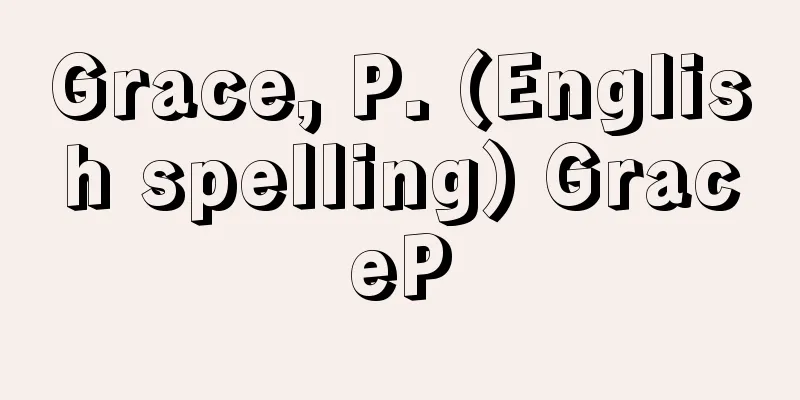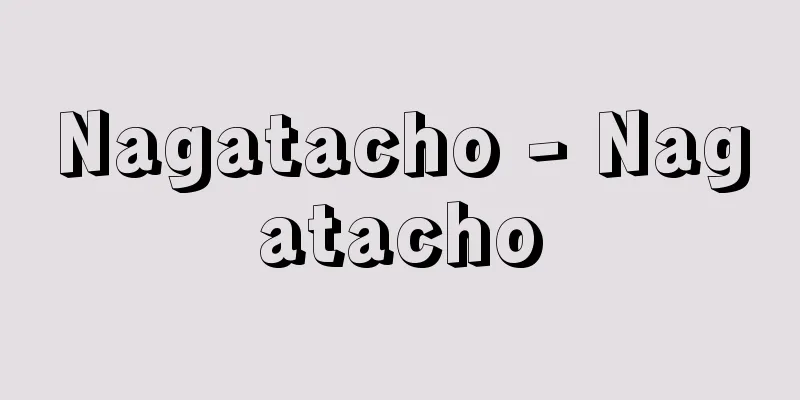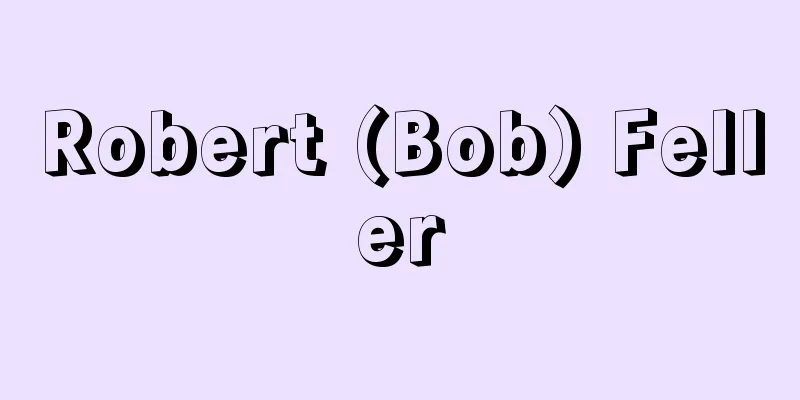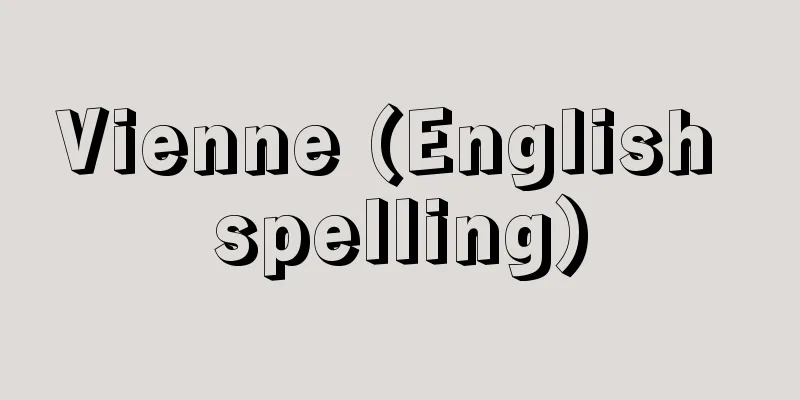Potential - Potential (English spelling)

|
When potential energy is determined at each point in a force field, it is called potential or potential energy. "Potential" means latent. It is used in contrast to kinetic energy, which is manifest as the momentum of movement. The sum of the two is constant, and energy can be transformed into manifest, latent, and vice versa, as seen in examples such as a thrown ball or a roller coaster. [Hiroshi Ezawa] Force Fields and Potentials When the force acting on a mass point is determined by its location in space, that space is called a force field (for example, the gravitational field around the sun, where the sun is stationary in space). If we take a reference point A in the force field and the work W (A-Γ-P) of slowly moving a mass point of mass m that is stationary there to another point P (with zero velocity and acceleration, therefore taking an infinite amount of time), then W(A-Γ-P)= W (P)= W ( x , y , z ) only if this work is determined only by the position P ( x , y , z ) of P, regardless of the path Γ along the way. [Hiroshi Ezawa] A place of potential The potential of a mass m in a field of conservative forces is a fixed value (scalar) at each point in space, so it is also a field. If there is a point charge Q fixed at the origin O of the coordinate system, and mass m also has a charge q , and the two charges have the same sign, a repulsive force acts on mass m with O as the center, according to the inverse square law. This force is a conservative force, and it is proven that there is a potential field W ( x , y , z ). The force acting on mass m is a repulsive force, and it becomes stronger the closer it is to point O, so if you try to move m closer to O, you will have to do a lot of work. Therefore, if you graph the value of W ( x , y , 0) on the plane z = 0, you will get a mountain shape (potential mountain) like the one in (1). This is one way of expressing a potential field. This mountain can also be expressed by drawing contour lines (called equipotential lines) on the xy plane (if you do not limit it to z = 0, it will be expressed as an equipotential "surface"). The potential hill also represents the original force field. In fact, since no work is required to move mass m along the equipotential lines, we can first see that the force acting on mass m at point P in (2) has no component along the equipotential lines. Since the force only has a component perpendicular to the equipotential lines, let us write this component as f (P). To gently pull mass m up to point P' above the hill, a force of -f (P) is applied to the mass, so the work done is -f (P)・PP'. This is the increase in potential W (P')- W (P). [Hiroshi Ezawa] "Introductory Physics Course 1: Mechanics" by Toda Morikazu (1982, Iwanami Shoten)" ▽ "Revised edition of Mechanics of Point Masses by Harashima Akira (1984, Shokabo)" ▽ "Quantum Mechanics 1" by S. Gasiorowicz, translated by Hayashi Takemi and Kitamon Shinshin (1998, Maruzen)" ▽ "Quantum Mechanics 1 and 2" by Ezawa Hiroshi (2002, Shokabo)" ▽ "Mechanics - For High School and University Students" by Ezawa Hiroshi (2005, Nippon Hyoronsha)" [Reference] | |Example of a force field with no potential ©Shogakukan "> Force field and potential (Fig. A) ©Shogakukan "> How to express a potential field (Figure B) Source: Shogakukan Encyclopedia Nipponica About Encyclopedia Nipponica Information | Legend |
|
力の場の各点に位置のエネルギーが定まる場合に、それをポテンシャルまたはポテンシャル・エネルギーとよぶ。「ポテンシャル」は潜在的の意。運動の勢いとして顕在する運動エネルギーに対していう。両者の和が一定で、エネルギーは顕在したり潜在したり互いに移り変わることができるのは、投げたボールやジェット・コースターなどの例にみられるとおりである。 [江沢 洋] 力の場とポテンシャル質点の受ける力が空間の場所により定まっているとき、その空間を力の場という(たとえば、太陽の周りの重力の場、ただし、太陽は空間に静止しているものとする)。力の場に基準点Aをとり、そこに静止している質量mの質点を静かに(速度、加速度がゼロ、したがって無限の時間をかけて)別の点Pまで運ぶ仕事量W(A-Γ-P)が途中の道筋ΓによらずPの位置P(x,y,z)のみで定まる場合に限り [江沢 洋] ポテンシャルの場保存力の場における質点mのポテンシャルは空間の各点で値(スカラー)が定まっているので、これも場である。座標の原点Oに固定された点電荷Qがあり、質点mも電荷qをもっているとし、二つの電荷は同符号とすれば、質点mにはOを中心とし逆二乗の法則に従う斥力が働く。この力は保存力であって、ポテンシャルの場W(x,y,z)をもつことが証明される。質点mに働く力は斥力で、点Oに近づくほど強くなるから、mをOの近くまで運ぼうとすれば、それだけ大きな仕事をしなければならない。それゆえz=0の面上に限定してW(x,y,0)の値をグラフにするとの(1)のような山の形(ポテンシャルの山)ができる。これがポテンシャルの場の一つの表し方である。この山はまた、等高線(等ポテンシャル線とよぶ)をxy面に描くことにしても表現できる(z=0に限定しなければ等ポテンシャル「面」で表現することになる)。ポテンシャルの山は、もとの力の場も表現している。実際、質点mを等ポテンシャル線に沿って運ぶのに仕事は不要だから、の(2)の点Pで質点mに働く力は等ポテンシャル線に沿う成分をもたないことが、まずわかる。力は等ポテンシャル線に垂直な成分をもつのみだから、その成分をf(P)と書いてみる。質点mを静かに山の上方の点P'まで引き上げるには、質点に-f(P)の力を加えるので、-f(P)・PP'だけの仕事をすることになる。これがポテンシャルの増加 [江沢 洋] 『戸田盛和著『物理入門コース1 力学』(1982・岩波書店)』▽『原島鮮著『質点の力学』改訂版(1984・裳華房)』▽『S・ガシオロウィッツ著、林武美・北門新作訳『量子力学1』(1998・丸善)』▽『江沢洋著『量子力学1、2』(2002・裳華房)』▽『江沢洋著『力学――高校生・大学生のために』(2005・日本評論社)』 [参照項目] | |ポテンシャルをもたない力の場の例©Shogakukan"> 力の場とポテンシャル〔図A〕 ©Shogakukan"> ポテンシャルの場の表し方〔図B〕 出典 小学館 日本大百科全書(ニッポニカ)日本大百科全書(ニッポニカ)について 情報 | 凡例 |
<<: Potential theory - Potensharuron (English spelling) theory of potential
Recommend
Babbler (English spelling)
A general term for birds of the passerine order, f...
Azuma Noh Kyogen
〘Noun〙 After the Meiji Restoration, Noh actors and...
Marginal rate of substitution
When a consumer consumes a good, if they reduce t...
Dioskoros (English spelling)
?‐454 Bishop of Alexandria. Reigned 444-451. A key...
McCarey, Leo
Born October 3, 1898 in Los Angeles, California. [...
Kreutzwald, FR (English spelling)
…Influenced by the national romanticism of the fi...
anchoring effect
… In addition to the adhesive mechanisms describe...
McMahon line
The border between northeastern British India and ...
Eye lotion (English spelling) eye lotion
…Medicines used to treat eye diseases. Eye drops ...
"School Architectural Drawings and Design Outline" - gakkou kenchikuzu setsumei to sekkei taiyou
… [Haruyoshi Fukuda] [School architecture in Japa...
Kundt, AAEE (English spelling) KundtAAEE
…In 1866, the German physicist August Adolph Edua...
Manufacture - Manufactur
Manufacture refers to the first capitalist indust...
Koginosho
This manor was established in Kogi-go (Kogi-go), H...
Pillow Jido - Makurajido
Noh piece. The fourth piece. Current work of Konp...
Mizuho Ota
Poet. Born in Nagano Prefecture on December 9, 18...









